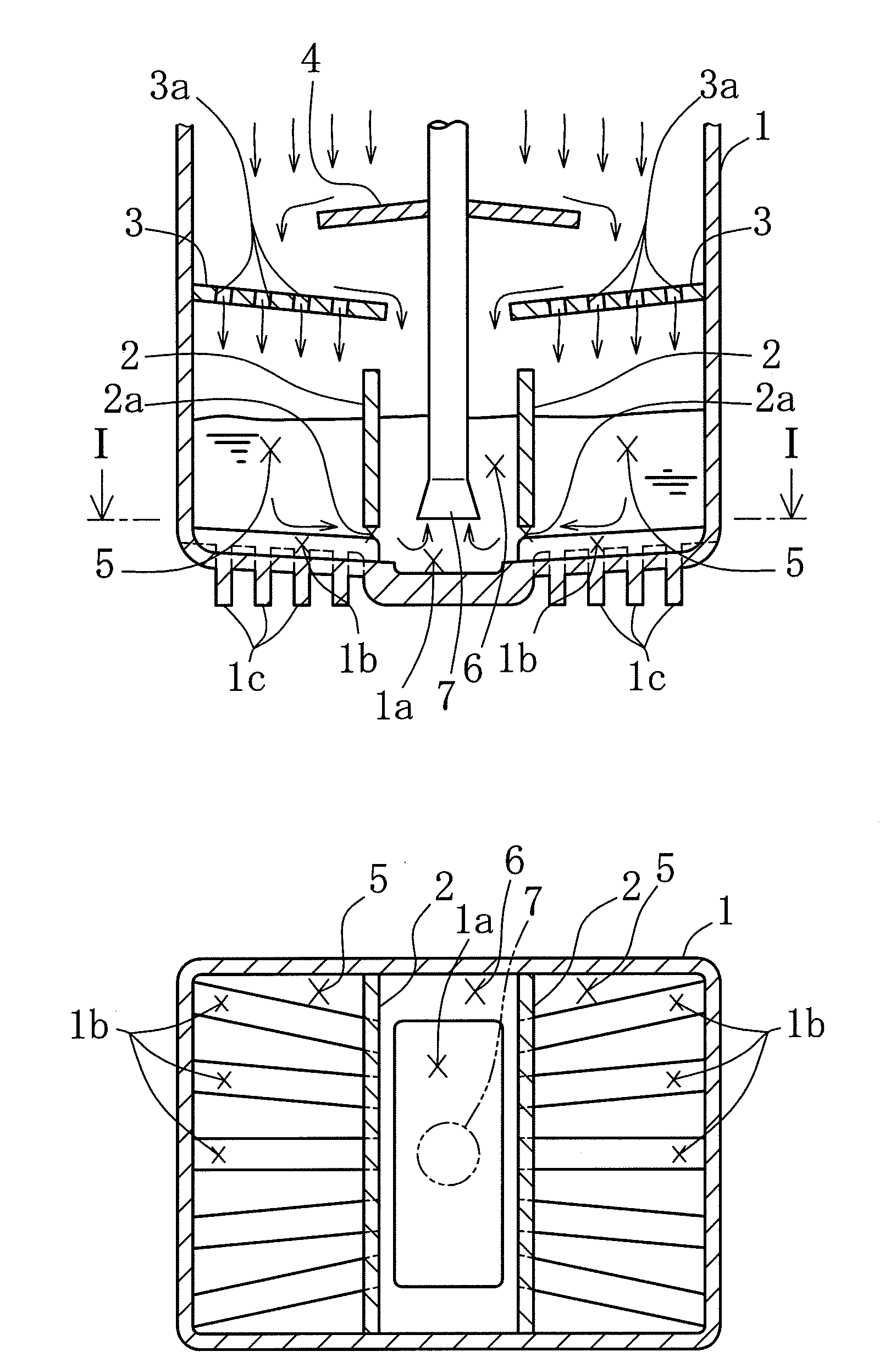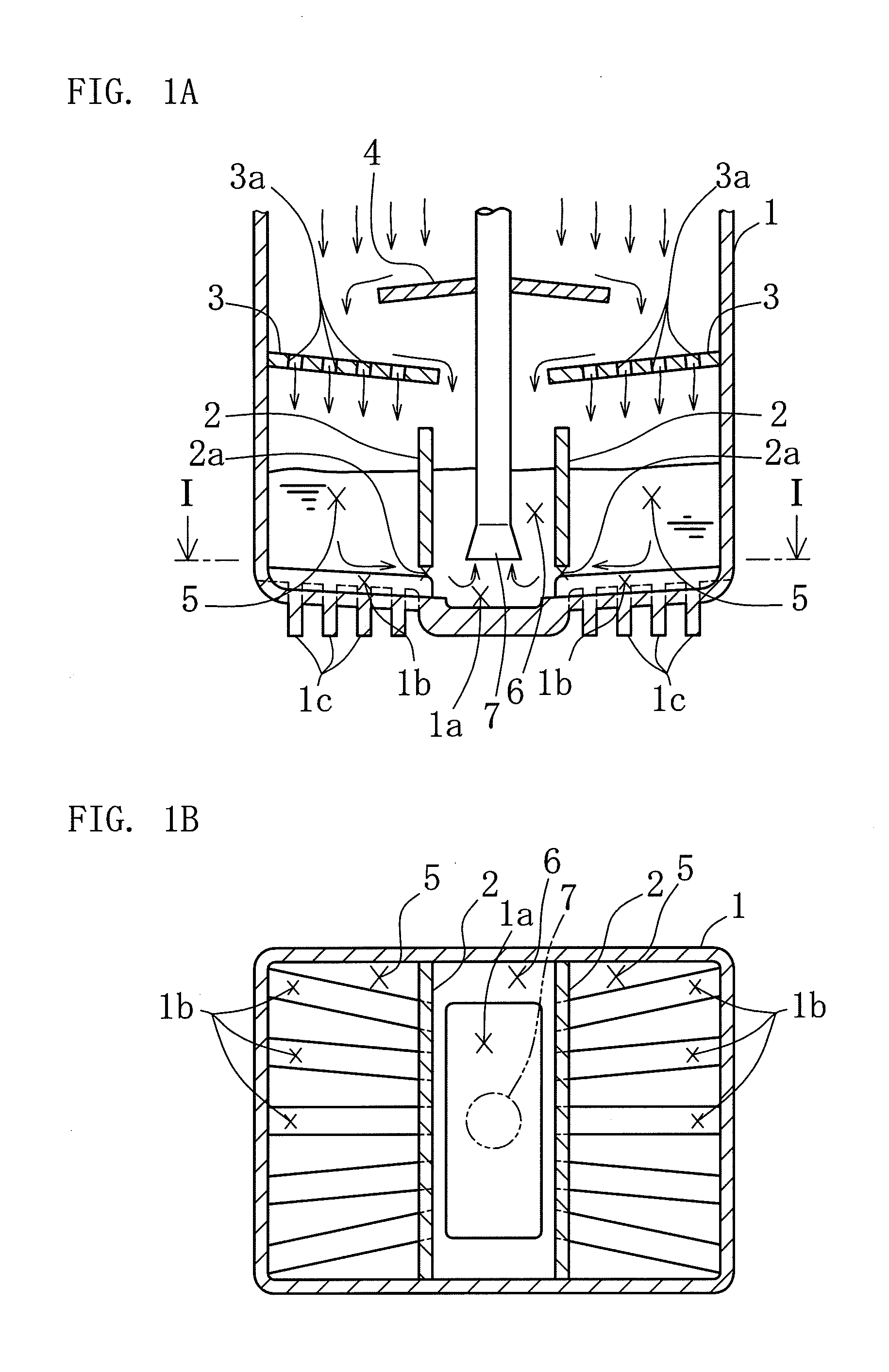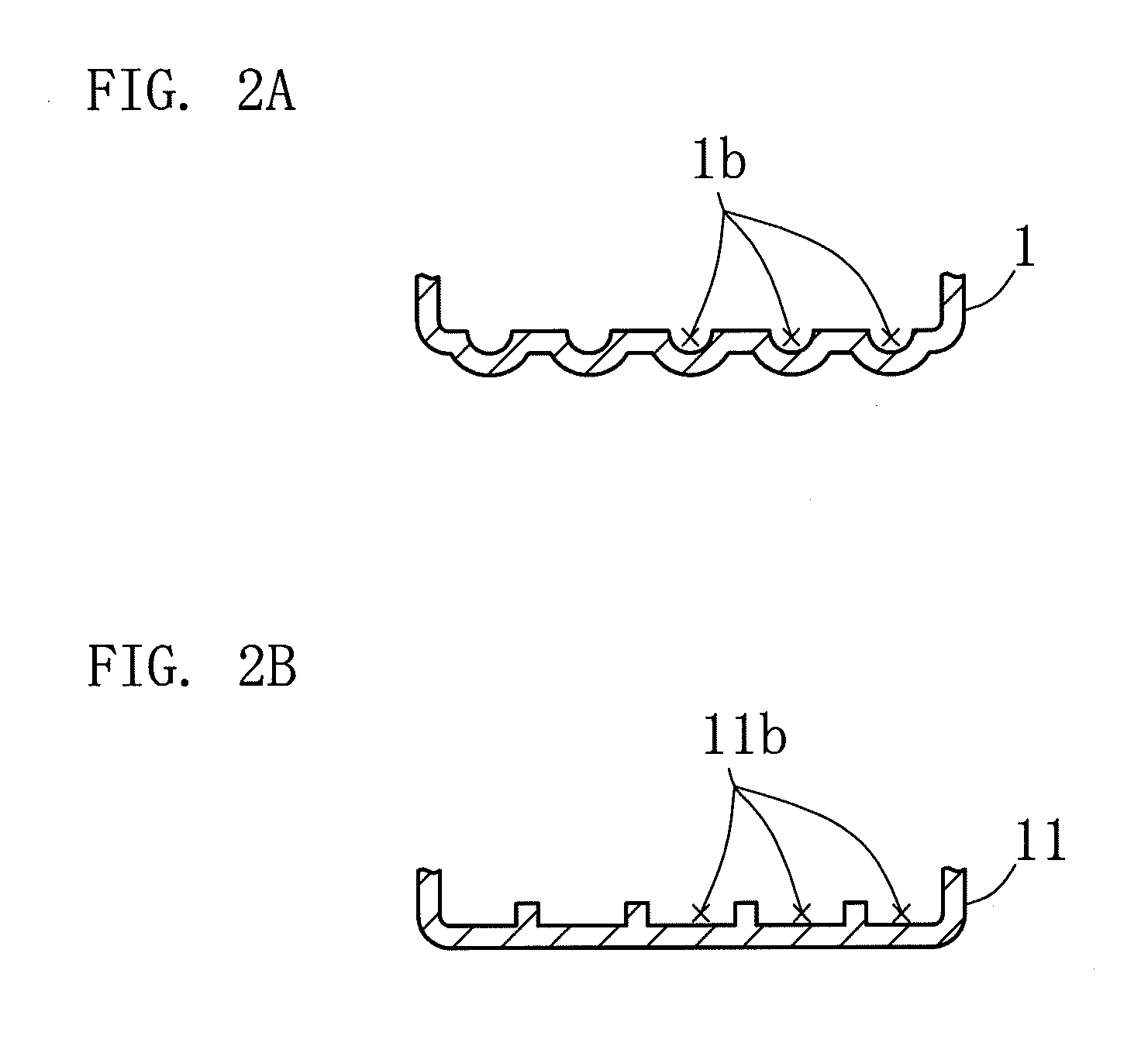Oil pan structure
a technology of oil pans and oil pans, which is applied in the direction of oil pumps, lubrication elements, mechanical equipment, etc., can solve the problems of not being able to suppress the temperature rise of such oil, and achieve the effects of high viscosity, low viscosity and high viscosity
- Summary
- Abstract
- Description
- Claims
- Application Information
AI Technical Summary
Benefits of technology
Problems solved by technology
Method used
Image
Examples
embodiments
[0065]Below, an oil pan structure of the present invention will be explained in detail using embodiments, with reference to the drawings. Note that an oil pan structure that is provided at a lower portion of an internal combustion engine is illustrated as the oil pan structure of the present embodiment.
(1) Configuration of the Oil Pan Structure
[0066]As shown in FIGS. 1A and 1B, the oil pan structure of the present embodiment is provided with an oil pan main body 1. In the oil pan main body 1, two plate-shaped partitioning walls 2 are provided, and both ends thereof are attached to side walls of the oil pan main body 1. The inside of the oil pan main body 1 is partitioned, by the two partitioning walls 2, into a second area 6 between the two partitioning walls 2 and first areas 5 on both sides of the second area 6, such that the volume ratio between the first areas 5 and the second area 6 is about 3:1. An oil suction opening 7, which is provided with an oil strainer at a distal end t...
PUM
 Login to View More
Login to View More Abstract
Description
Claims
Application Information
 Login to View More
Login to View More - R&D
- Intellectual Property
- Life Sciences
- Materials
- Tech Scout
- Unparalleled Data Quality
- Higher Quality Content
- 60% Fewer Hallucinations
Browse by: Latest US Patents, China's latest patents, Technical Efficacy Thesaurus, Application Domain, Technology Topic, Popular Technical Reports.
© 2025 PatSnap. All rights reserved.Legal|Privacy policy|Modern Slavery Act Transparency Statement|Sitemap|About US| Contact US: help@patsnap.com



